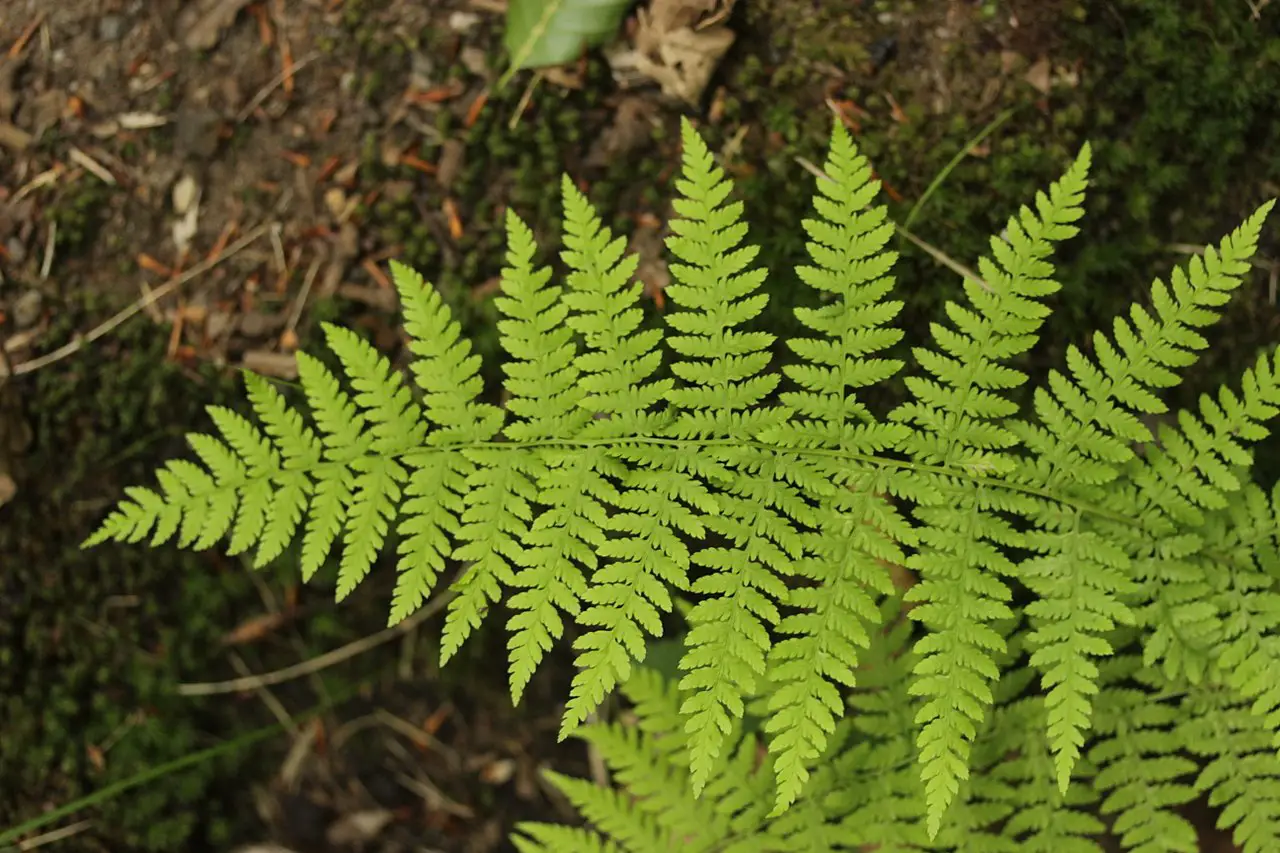
Image – Wikimedia / Wikimedia Commons
Ferns are great plants. It is true that the vast majority are of the classic green color, but the elegance of its fronds (leaves) is such that they look good almost anywhere, especially if we talk about species such as the Pteridium aquiline.
Why? Because it is not only precious, but also it is very very easy to take care ofbeing able to be both inside the house and in the protected corners of the garden or patio.
Origin and characteristics of Pteridium aquiline

Image – Flickr / David Eickhoff
Known as eagle fern, amambáy or common fern, it is a perennial plant native to all over the world, except in desert areas. Its fronds measure up to 2 meters, and are tri or quadripinnate, the pinnae being ovoid, glabrous on the upper surface and hairy on the underside..
The sporangia, that is, those structures that contain the spores, have a longitudinal ring. These spores are very light, so much so that the wind transports them with great ease.
What are their cares?
If you dare to have a copy of Pteridium aquilinewe recommend that you provide the following care:
Location
As we have discussed, it can be almost anywhere. But the light requirements will vary depending on whether you have it indoors or outdoors:
- Interior: it is preferable that it is placed in a room where a lot of light comes in from outside, and away from drafts, since otherwise it would have a poorer development, and even its fronds could lose color.
- Outdoor: place in semi-shade, in an area where the sun will never shine directly. This way, you will prevent it from burning.
Irrigation
Watering will be moderate to frequent. During the hottest and driest months of the year it will be necessary to water more often than the rest, as the soil dries more quickly. But how often exactly?
Again, it will depend on where you have it:
- Interior: If you grow your common fern indoors, you should water it very little. During the summer you may need two irrigations a week, but the rest of the year with one every ten or fifteen days you can have enough.
Check the humidity of the substrate if in doubt, and avoid waterlogging. If you have a plate underneath, remove the excess water 30 minutes after watering. - Outdoor: outdoors the soil or substrate takes less time to lose its moisture, so in summer it may be necessary to water 3 to 4 times a week, and the rest once a week.
Use rainwater whenever you can, as it is the best for the plants. Otherwise, use water suitable for human consumption, or without too much lime (with a pH of 6 to 7).
Earth

Image – Wikipedia, the free encyclopedia
- Flower pot: advisable to mix substrate for acidic plants (on sale here!) with 30% of a porous substrate, such as perlite (for sale here!) or la arlita (for sale here!).
- the garden: it is not demanding, but prefers to grow in soils rich in organic matter, with good drainage.
Subscriber
The Pteridium aquiline it is a fern that requires a regular supply of fertilizer. For this reason, from the beginning of spring to the end of summer, it should be paid with organic products, if possibleLike mulch or compost.
In the event that you want to use fertilizers, we recommend a specific one for green plants (for sale here!). But yes, you must follow the instructions specified on the packaging to avoid problems.
Multiplication
It is a plant whose spores often germinate very well without having to be aware of them. In fact, it will be enough to wait for them to germinate in the same pot as their mother plant, and then carefully remove them with the help of a small hand shovel or even a soup spoon and then plant them in individual pots.
If you have acquired spores, sow them in spring in a seedbed with a substrate rich in organic matterand place it in semi-shadow. Keeping it moist (but not waterlogged) they will germinate in about a month.
Pruning
Don’t need it. Remove only the fronds that are drying with scissors previously disinfected with pharmacy alcohol or a few drops of dishwasher for example. It will also help to clean them with baby wipes.
Planting or transplanting time
The Pteridium aquiline can be planted in the garden in springwhen the frosts have passed. If you have it in a pot, transplant it to a larger one when you see roots coming out of the drainage holes, or when more than two years have passed since the last transplant.

Related article:
Transplant plants
Plagues and diseases
Usually it does not, but in dry and very hot environments it could be affected by some cochineal o aphid.
Rusticity
Resists frosts down to -15ºCso you won’t have to worry about the cold 😉. In addition, it is fire resistant and adapts without too many problems to degraded soils.

Image – Wikimedia / Wikimedia Commons
What did you think of this fern?

